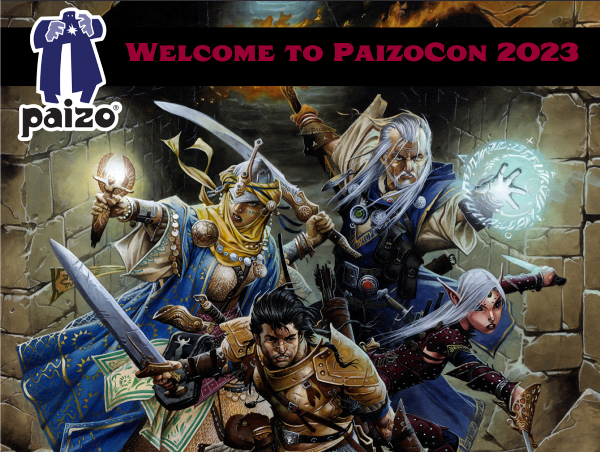Variety, the Hot Sauce of Gaming
By The Warden

I’m keeping this week’s article short for one really frustrating reason. My first one – an analysis on shock value and controversy in RPGs – was erased by my over-cursed laptop in dire need of upgrades or substitution. While I could easily set about rewriting what I had before this thing turned it into a series of random symbols, it will likely pale by comparison and I despise rewrites. Revisions, sure, but not rewriting an entire article from scratch.
It’s because I hate repetition and the revelation has given me a new topic for this week: variety. More specifically, how no two sessions of the same game are alike. Considering it as consciously as I am now, it’s what I love about roleplaying games, particularly when it comes to playtesting them.
Designing games means designing adventures, quests, and sessions, which in turn leads to playtesting them for different groups. Most of the time, this leads to running the same thing over and over again with a few twists here and there. In most formats, this would literally be a repeat of the same session as before with the audience’s perception varying. For example, going on a book tour means reading the same passage to different people and learning how they interpreted or enjoyed the work. In roleplaying games, the beauty (and curse, which we’ll get into) is that no two groups – or players – will ever act the same and go about things in a different way when you give them the flexibility.
I clarify “when you give them the flexibility” because running a simple dungeon crawl, for example, with a straight-lined path from Point A to Z will only vary in the order enemies are slain and any unique hidden items the players find along the way. Sure, some groups might have their own cool moments compared to others, but it’s generally the same game with different numbers. More story-based games can create a wide variety of decisions and outcomes as every player makes their own crazed choices and roleplays their characters differently, even if each group uses the same pre-gens.
A PLAYER’S DREAM…
To cite an example, a couple of years ago I was playtesting an adventure written during my Emerald Press days titled “The Endless Vault.” Written for three different levels of D&D 4e characters, I set up a table at the Game Summit con in Ottawa at three different times, one for each level. The same adventure with only minor changes accounting for character levels. The objective was for the PCs to enter a wizard’s home and attempt to steal a prized artifact for a greedy butler, only to discover the artifact was more than anyone had bargained for. What I got were three massively different outcomes.
The first group (playing at 5th level) was a trio of lads in their mid-30s and they plotted their approach for an hour before making their move and leaving nothing to chance or inflicting violence to the best of their ability. Their plan was to create a ruse getting them inside the home with the wizard’s permission while one PC distracted him to allow the others access to the basement where the artifact was believed to reside. They were successful and left the wizard helplessly scratching his head the next morning.
The second group (at 10th level), mostly around their 20s, spent fifteen minutes planning their nighttime entry to the house, disengaging magical and mundane traps and finding themselves engaging the wizard in a face-to-face battle after setting off the last alarm.
The third group (playing level 15 characters) were a mix of ages and said “Nuts to this crap!” They stormed the house in an effort to kill the wizard first and claim the artifact second, resulting in a massive debacle of planning and expectation that almost leveled the house. But that’s not where the story ends. Oh, no. The thief decided to make a run down to the basement during the skirmish and investigate the artifact’s condition himself. Sensing an end to its master’s life, the artifact made a deal with the thief to protect the artifact in exchange for its power… and the thief accepted, becoming the new villain of the adventure. (I will point out this was all done with the group’s consent and we all loved the moment.) The thief was killed and the artifact claimed by the rest of the group.
While this example does carry some issue with character level between sessions – clearly demonstrated by the balls of each party as higher level characters raced into danger while lower level ones played it cool and cautious – this was balanced by the difficulty of the adventure and its challenges. What resulted were three massively different tactics within the same descriptions, NPCs, and locations. That is what makes these games so cool. To play.
…AND A DESIGNER’S NIGHTMARE
Designing RPG adventures can be the flip side to this issue. Everything positive we’ve just talked about is a hurdle for your game to overcome during the writing phase of a session. Every item, room description, character, and detail in your work has to function in the exact opposite of what you intended for it. If you think a door is just a door, you’ll be sadly mistaken because somewhere, out there in the wide world, a player character has ripped the door off its hinges and is using it as a makeshift shield. And another group will use it to hold back the minotaur desperately pounding its way through to kill the surviving members of a soon-to-be TPK meltdown. And the door is the least of your worries.
Unlike other works of fiction, weaknesses or flaws in the story can be exploited by the audience of a RPG and bring all your hard work crashing to the ground. You can resort to the assumption all GMs out there will back you up and cover up that weakness, but that’s just weak story telling and game design. Shame on you for every considering that option!
The other kicker is that not every group plays to stretch out the rules of the game. Some groups – possibly due solely to the GM sitting at the head of the table – stick to the rules and content exactly as written. If it’s not in the rules, you can’t do it. Say what you will about this style of gaming, but they’re saying the same thing about how you play too.
What you have is the conundrum of designing a game capable of handling any number of situations outside of your wildest dreams and worst nightmares while simultaneously detailing those concepts you have considered in great detail. When I say designing an adventure is much like being M. Night Shyamalan – your work is either a masterpiece or a nominee for one of the year’s worst films – you know what I mean.
Yet therein lies the challenge because the reward is better than anything else I can think of when you get it right. Not every group will enjoy playing your work, but some of them will and some of those will remember it forever as one of their best. And that’s another reason why variety is what makes roleplaying games so great.
Now if you’ll excuse me, all this cursing at my laptop has made my throat itchy.


